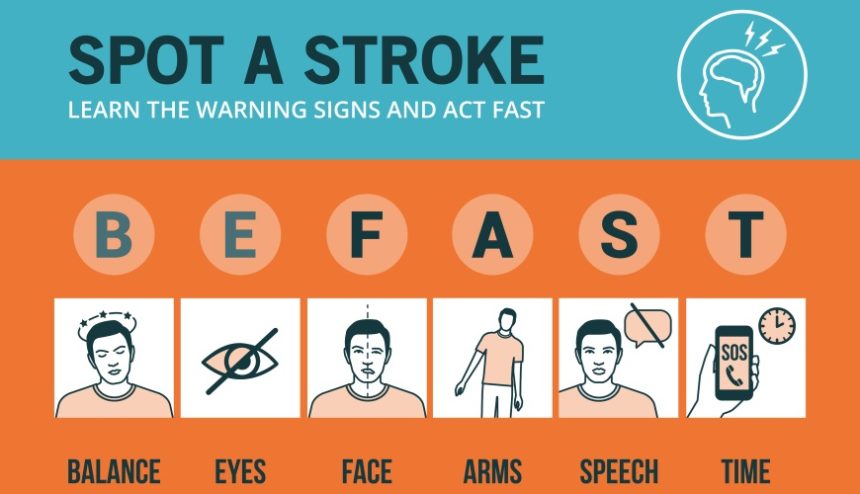We’re more familiar with the “big” signs of a stroke: drooping facial features, slurred speech, and weakness or the inability to use the limbs on one side of the body. But what about a mini-stroke? Would you recognize one if it happened to you or to someone you know? A public figure was recently diagnosed with a mini-stroke and his only noticeable symptoms were lightheadedness and neck pain.
A transient ischemic attack (TIA), commonly known as a mini-stroke, occurs when stroke symptoms appear briefly—whether for a few minutes or up to an hour.
TIA Symptoms Appear Similar to Early Stroke Symptoms:
- Weakness, numbness, or paralysis, usually on one side
- Mumbled speech or confusion when trying to understand others
- Blindness or double vision affecting one or both eyes
- Difficulty with balance or coordination
Although TIA symptoms subside quickly, it is still important to seek immediate medical care. A TIA could indicate the potential for a stroke. One in three who first had a TIA will have a stroke—half of them within a year.
A TIA is often caused by plaques built up from fatty cholesterol deposits and decreasing the blood flow through an artery or vein—leading to the formation of a clot, which blocks blood flow to the brain.
Risk Factors You Can’t Control:
- Family history of TIAs or stroke
- Age—risk of TIAs is greater after age 55
- Gender—men are at higher risk, but a woman’s risk increases with age
Risk Factors of a Stroke You Can Control
If you are at risk for TIAs, there are several proactive steps you can take to improve your chances of avoiding them—ranging from monitoring your health conditions to choices you make in achieving a healthier lifestyle.
When you discuss your health concerns with your doctor. He or she will likely screen for these TIA risk factors and other conditions, which can increase the risk of TIAs:
- High blood pressure or cholesterol
- Cardiovascular disease
- Diabetes
- Elevated homocysteine levels (a type of amino acid in your blood)
- Overweight
Making deliberate lifestyle changes will also improve your health and potentially reduce your risk of TIA. Choose to stop smoking, be physically active, improve your nutrition, limit alcohol intake, and avoid illegal drugs.
If you or someone you know has had a mini stroke or is at risk for having one, see a doctor and take proactive steps to care for your future health.
Acute Stroke Ready Hospital in Glenwood
Glacial Ridge Hospital is an “Acute Stroke Ready Hospital,” a designated Level IV Trauma Center, and a Critical Access Hospital. In 2010, Glacial Ridge Hospital was one of the first hospitals outside of the Twin Cities to implement telestroke in diagnosing patients with strokes and providing early treatment.


